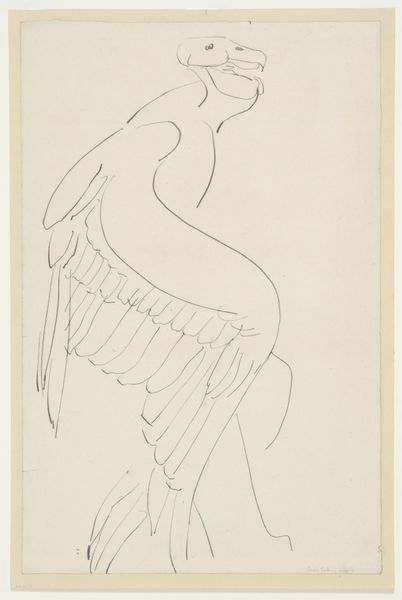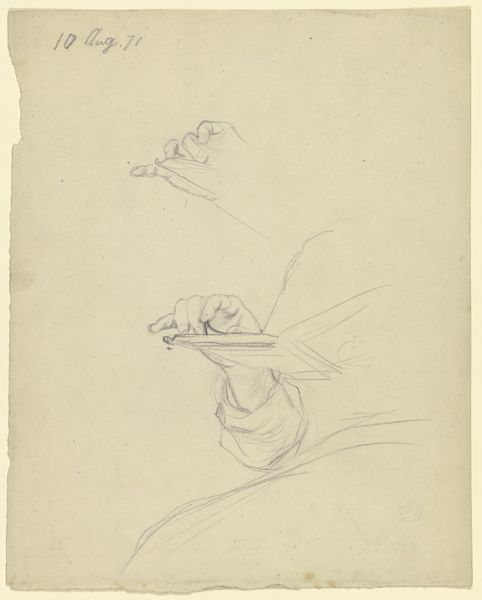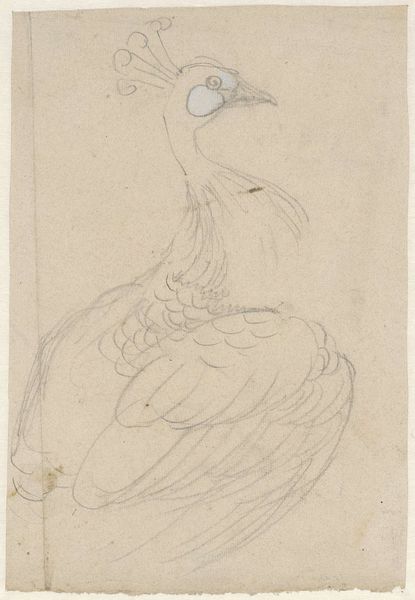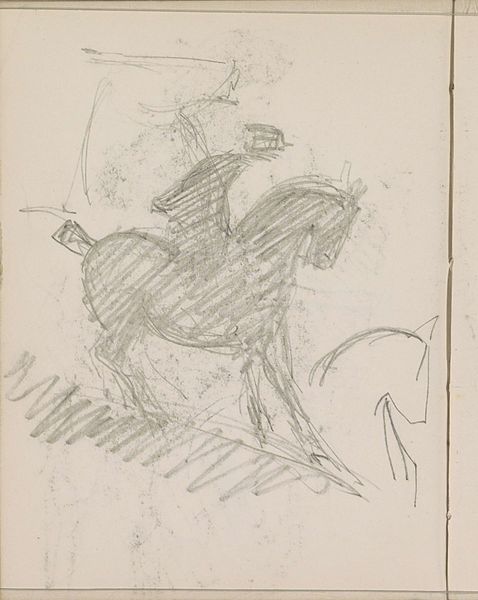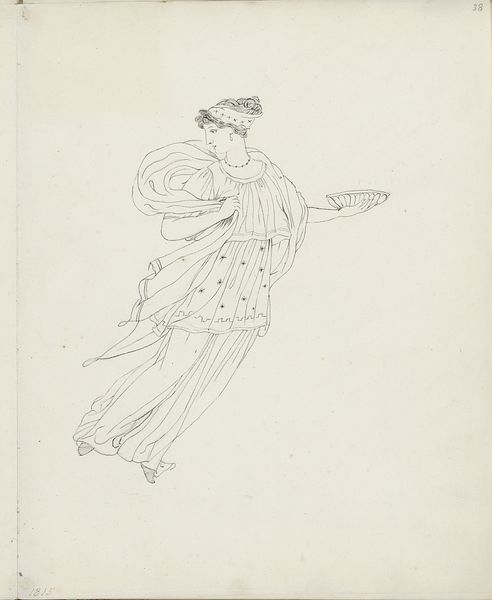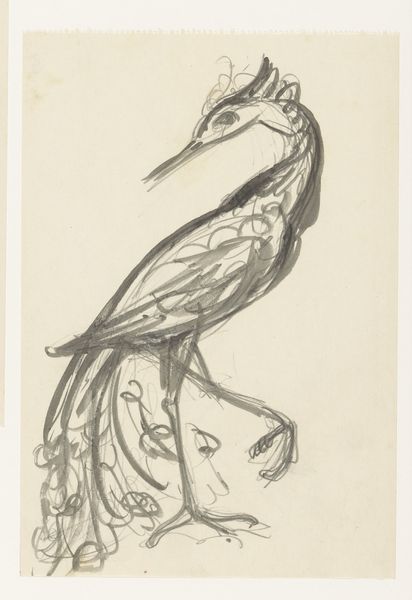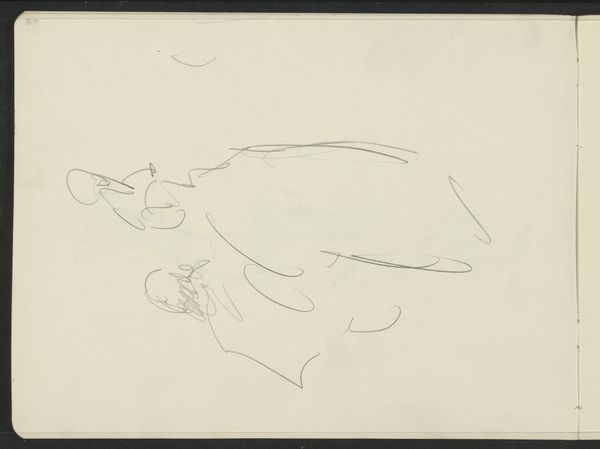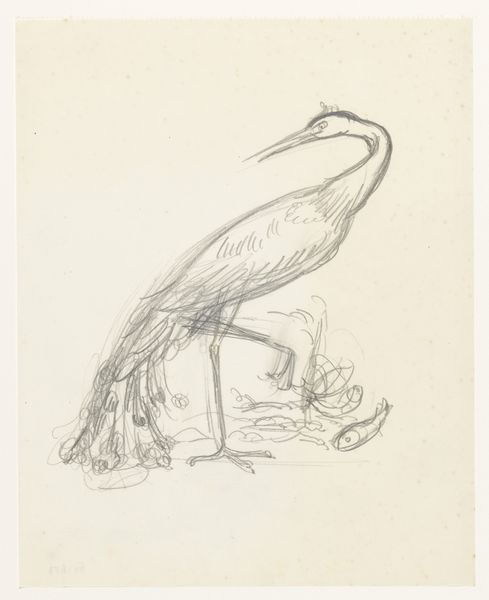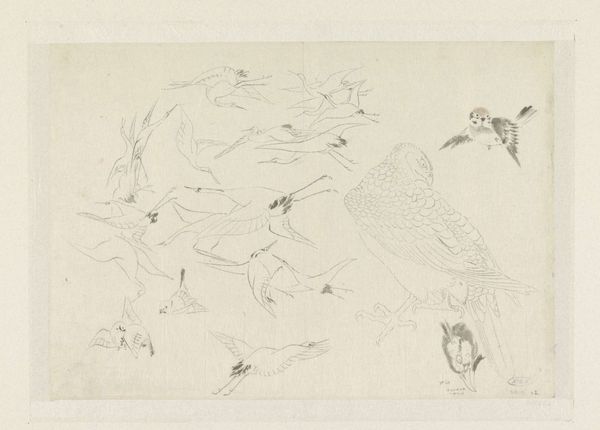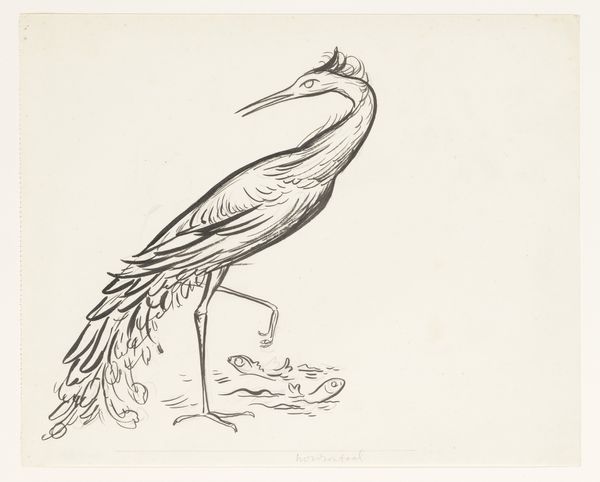
drawing, pencil
#
drawing
#
pencil sketch
#
landscape
#
figuration
#
pencil
#
line
#
sketchbook drawing
#
pencil work
Dimensions: height 360 mm, width 220 mm
Copyright: Rijks Museum: Open Domain
Curator: Let's discuss this pencil drawing, dating from around 1890 to 1900, titled "Roofvogel op een tak." It depicts a bird of prey perched on a branch. Editor: It’s striking. The use of simple lines gives the drawing a sense of raw, untamed power, like the bird itself. There’s also something almost vulnerable in the thinness of the lines, like the creature’s balance on the edge of things. Curator: Indeed. Birds, especially raptors, often embody complex symbolic weight. Throughout various cultures, they can signify freedom, foresight, or even aggression, acting as omens or spiritual messengers. How does this bird sit within those legacies, do you think? Editor: Well, the downturned head and piercing eye suggests vigilance. There's an element of hunting here. It's like this bird is observing the landscape, the artist observing the bird, and us observing both, implicated in an unending hierarchy. Considering its probable origins in the late 19th century, I’d say it's entangled in the politics of colonial dominance—the bird a predatory extension of a specific power dynamic. Curator: I hadn't considered that, but that perspective definitely aligns with its context. Interestingly, I find the lack of detail in the plumage quite evocative. Instead of precisely defining the species, the artist has distilled it into a symbol, rendering the essential characteristics. Editor: Yes, and perhaps even gesturing to what remains unsaid about nature. There's a whole visual history concerning landscape art and ownership implied through documentation like this one. Is there anything known about the social position of the artist in relation to the patron? Curator: It's part of Karel de Nerée tot Babberich's body of work. So we know it belongs to an aristocratic lineage. We are clearly talking about landscape from a specific vantage point. Editor: Absolutely, making its predatory theme perhaps unconsciously embedded, something he saw reflected in his social position. Curator: A vital point. Considering it afresh, this drawing reflects both the natural world and an implicit socio-political commentary. Editor: A reminder that the natural world depicted through artistic gestures always contains loaded signifiers, intentionally or otherwise.
Comments
No comments
Be the first to comment and join the conversation on the ultimate creative platform.
